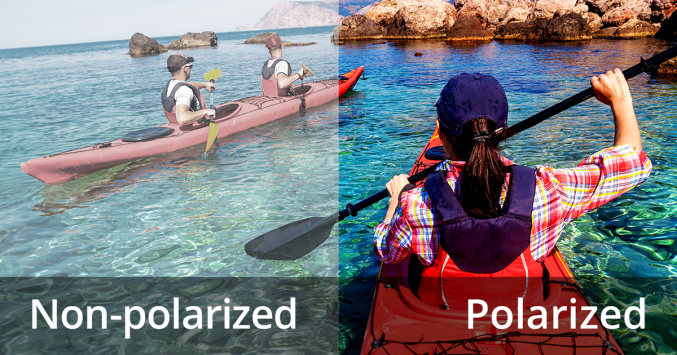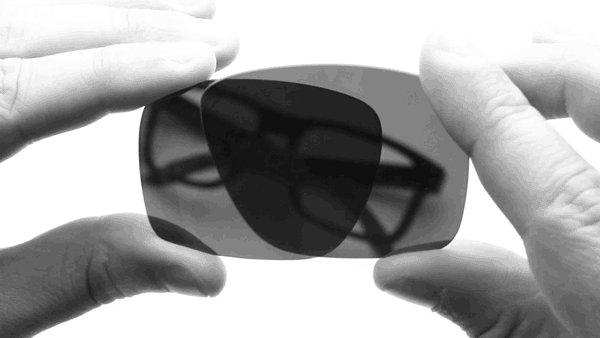HOW DOES POLARIZED LENSES WORK

Polarized sunglasses always have been very popular among people who spend a lot of time near water. And for good reason — polarized lenses block glare from light reflecting off the surface of the water better than an other type of sunglass lenses.
But sunglasses aren’t just for people who love boating, fishing or going to the beach. Anyone who is bothered by glare outdoors can benefit from these advanced sunglass lenses.
Polarized sunglasses can be helpful for driving, too, because they reduce glare-causing reflections from flat surfaces, such as the hoods of vehicles and light-colored pavement.
Some light sensetive people, including someone who has had cataract surgery, also will benefit from polarized sunglasses.
Polarized sunglasses: Other considerations
And because polarized lenses reduce reflections from water, they significantly improve your ability to see objects below the surface of a lake, stream or the ocean (a great benefit for both fishing and boating).
For the best comfort and performance with any polarized sunglasses, ask your eye care professional about having anti-reflective coating applied to the backside of the lenses. This will eliminate distracting reflections from the back surface of your sunglasses when the sun is behind you.
HORIZONTEL AND VERTICAL LIGHT WAVES

Sunlight scatters in all directions. But when it strikes flat surfaces, the light that is reflected by the surfaces tends to become polarized — meaning the reflected light beams travel in a more uniform (usually horizontal) direction. This creates an annoying and sometimes dangerous intensity of light that causes glare and reduces visibility.
Polarized lenses have a special filter that blocks this type of intense reflected light, reducing glare and discomfort.
HOW TO TEST IF YOUR LENSES ARE POLARIZED
If you were to take 2 of these filters and cross them perpendicular to one another, less light would pass through. The filter with a horizontal axis will block vertical light, and the vertical axis will block horizontal light. That’s why if you take two polarized lenses and tilt them back and forth between 0° and 90° angles, they’ll darken as you rotate them.

Tri Acetate Cellulose Polarized lens
TAC 1.1mm Tri Acetate Cellulose Polarized lens
Triacetate Cellulose or TAC Polarized Lens feature a new lens technology formulated for superior visual and polarization clarity. They are hard coated to resist scratching and block out 99% of all harmful UV rays up to 400 nanometers. This lens material is very lightweight and highly impact resistant.
TAC lenses are developed through a multi-layer process. TAC Polarized has 7 composite layers, which comply with the international sunglasses lenses standard, UV400. The first layer is a polarizing layer. It provides more than 99% of the polarizing effect, which can effectively absorb glare. Second and third layer are bonding layers and can effectively resist the tests of harsh environments. The fourth and fifth layers represent the UV-absorbing layers. Over 99% of UV-ultraviolet rays are absorbed. The sixth and seventh layers represent the shock-proof layers. These layers increase toughness, are highly impact resistant, prevent lens scratches and extend the life of the polarized lens
